Many women notice how rashes appear on their skin from time to time, but not everyone is aware of their true causes. Acne in most cases is associated with hormonal imbalance in the body caused by an imbalance of male and female sex hormones. Most often, hormonal acne in women occurs due to excess androgens.
Is it dangerous?
The rash itself is not a symptom of any disease. It is more correct to consider them an external defect that occurs as a result of an increased level of male hormones in the female body. At the same time, acne needs to be treated and not left to chance. Hormonal acne in women should not be ignored, since acne is often accompanied by a bacterial infection, which, in turn, can lead to serious inflammation.
With androgen deficiency, sebum production is reduced, so acne does not appear. Moreover, hormonal acne on the face in women can occur not only due to excess androgens: the level of insulin in the body can play a certain role in the problem. Most often, representatives of the fairer sex suffer from acne in adulthood, in the period 30-50 years, but acne is often a manifestation of premenstrual syndrome at a younger age.
By the way, acne appears less frequently in men. Acne due to hormonal changes is observed in young men, but by the age of 20-23, acne usually goes away on its own, without intervention.
How to distinguish it from other rashes
What does hormonal acne look like in women? It is not difficult to distinguish such acne. Typically, pustules are localized where there are many sebaceous glands - on the temples, forehead, chin, neck, in the nasolabial triangle. In appearance, pimples resemble small red formations that occupy a wide area of the affected area. Sometimes each pimple contains a pus-filled white head. There may also be a deep subcutaneous cyst underneath. Hormonal acne is usually not itchy, but can be very painful, inflamed, and enlarged.
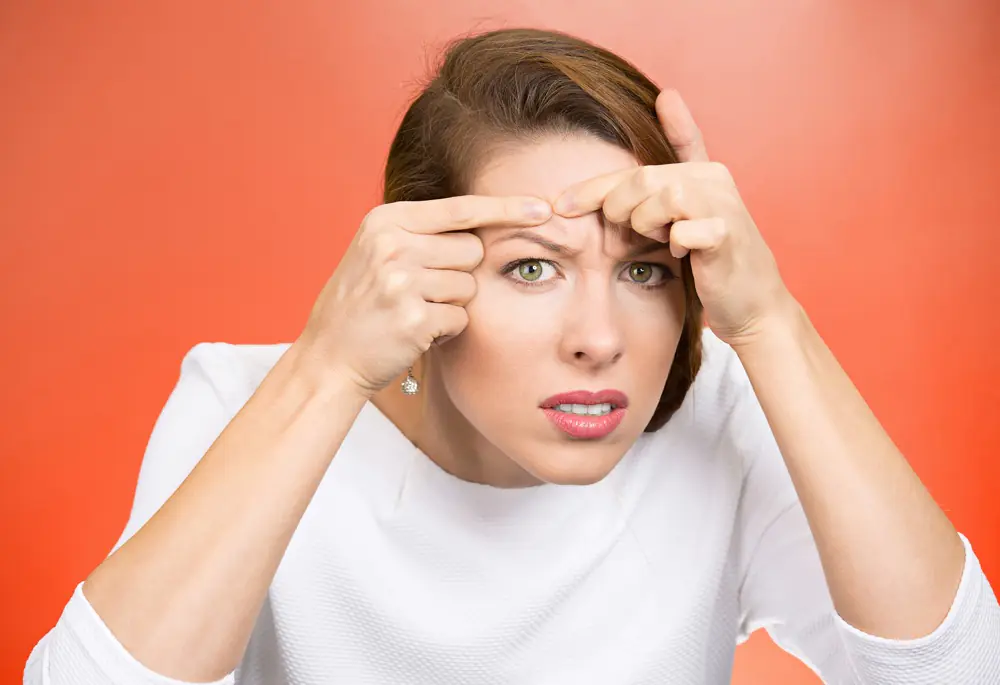
Causes of hormonal imbalance
To understand why hormonal acne occurs in women, it is necessary to look deeper into the problem, find and eliminate factors that contribute to increased androgen synthesis. Acne, which is difficult to respond to external treatment, appears under the following conditions and diseases:
- polycystic ovary syndrome;
- malignant or benign tumors of the adrenal glands, appendages;
- long-term use of hormonal anti-inflammatory drugs;
- the use of anabolic steroids and other steroids when playing sports;
- carrying out conservative hormonal therapy and surgery for the purpose of gender reassignment.
Hyperandrogenism can be a consequence of menopause, pregnancy, and childbirth. Sometimes the cause of hormonal rashes is diabetes mellitus or thyroid disease. To determine the exact cause of hormonal acne, a woman should contact a gynecologist-endocrinologist and undergo the necessary tests. Typically, such patients, in addition to skin rashes, also have other symptoms indicating an excess of male hormones:
- increased hair growth on the face, chest, neck, chin, abdomen;
- absence or irregularity of menstruation;
- increased muscle mass, deep voice;
- reduction of mammary glands in volume;
- weight gain, obesity.
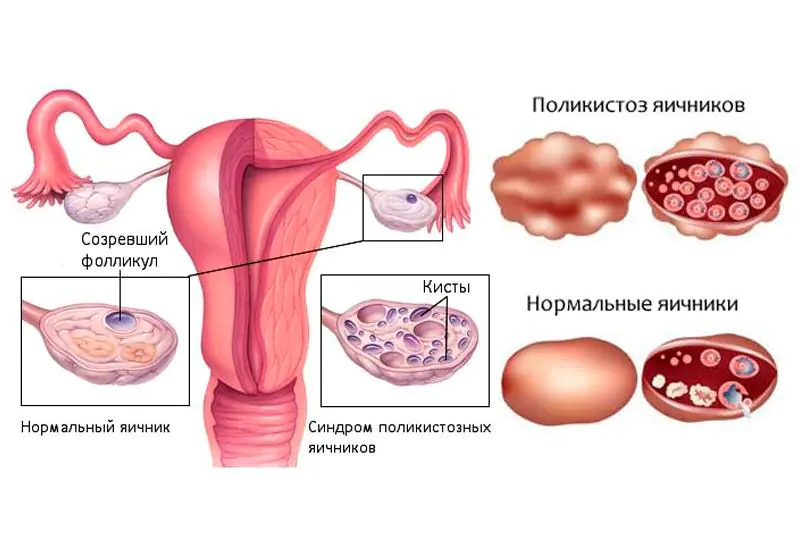
Mechanism of rash occurrence
Testosterone and dihydrotestosterone are synthesized in the skin - these are the same androgens that activate the growth of new cells and the production of fatty secretions. Against the background of excess male hormones, the following occurs:
- sebum production increases, which leads to a decrease in linoleic acid on the surface of the epidermis - this leads to irritation and an inflammatory reaction;
- excess fat clogs pores and prevents normal skin breathing;
- When contaminated, sebum oxidizes, bacteria multiply in clogged pores, resulting in comedones and ulcers.
Insulin and acne: where is the relationship?
An increased concentration of androgens in the blood is not the only possible cause of rashes in women. Hormonal acne often appears when insulin levels in the blood increase. Active production of this substance leads to a cascade hormonal reaction of the body, which contributes to increased production of oily secretions and the formation of ulcers on the skin. The results of some studies have allowed scientists to come to the conclusion that one of the ways to prevent and treat hormonal acne in women is a carbohydrate-free diet. Moreover, it is recommended to give up not only sweets, pastries, bread, potatoes, but also whole milk.
Insulin resistance plays a certain role in the development of this skin problem. Due to the resistance of skin tissues to the effects of this hormone, they are not adequately supplied with glucose. As a result, the pancreas begins to produce even more insulin, which ultimately leads to the appearance of hormonal acne in women. In the photo they do not differ from those rashes that occur against the background of hyperandrogenism. The appearance of a pustular rash is a reason for additional examination and exclusion of type 2 diabetes mellitus.
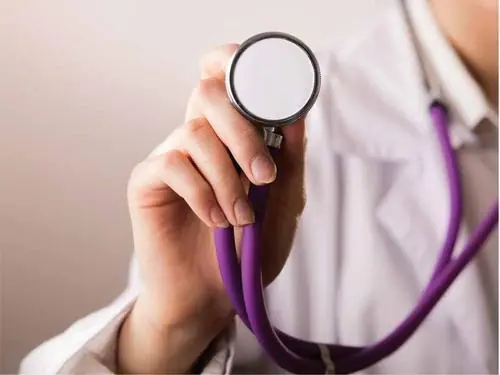
Deficiency of female hormones
Sometimes acne appears due to hormonal imbalance in women, not with an excess of male hormones (analysis shows that this indicator is normal), but with a lack of estrogen. These are the substances that have a protective effect, preventing inflammation and the formation of acne. Hormone-related rash is not uncommon after spay removal. The same can be said about patients with reduced thyroid function: hypothyroidism prevents the normal functioning of the reproductive system and sufficient secretion of estrogen.
Menstrual cycle and rashes
At the beginning of the cycle, estrogens predominate in the blood of women, but after ovulation their concentration decreases, and the level of progesterone, on the contrary, increases. If a woman is healthy, then the amount of testosterone in her body should remain the same, regardless of the phase of the cycle. If its level is exceeded, then when estrogen decreases (the least of these hormones are produced on the eve of menstruation), testosterone begins to become active, manifesting itself as acne on the face, chest, and neck.
A similar process occurs in adulthood, when the functions of the ovaries fade and there is less estrogen in the body, while testosterone continues to be produced by the adrenal glands with the same activity.
Principles of treatment
First of all, you need to make sure that the cause of the rash is a hormonal imbalance. To do this, the doctor will direct the patient to undergo tests that will determine the level of androgens, estrogens, progesterones, and thyroid-stimulating hormone. To clarify the diagnosis, an ultrasound of the endocrine system and ovaries may be required.
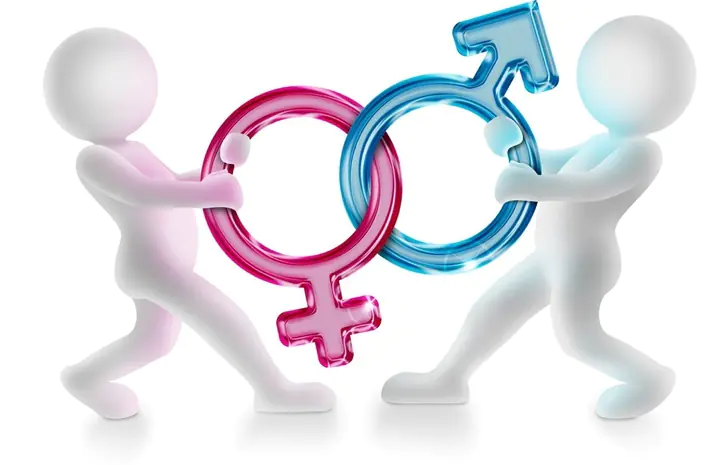
Treatment of hormonal acne in women should be based on eliminating the factors that cause skin problems. It is necessary to combat acne comprehensively. First of all, you should work to restore the functions of the sebaceous glands, achieve healing of existing acne and eliminate inflammation in the hair follicles. After the skin has healed, measures are taken to remove age spots and acne scars. Before treating hormonal acne, a woman should also reconsider her diet, consult a doctor about the use of external medications, medical and hygiene procedures.
Drug therapy
Treatment involves not only the use of external remedies for hormonal acne, but also the use of oral medications necessary to treat the underlying disease causing hormonal imbalance - polycystic ovary syndrome, hyperandrogenism, hypothyroidism, diabetes.
Some medications reduce androgen synthesis and help restore hormonal levels. Drugs that suppress male hormones include Cyproterone, Gestrinone, Nilutamide, Finasteride.
In addition, it is recommended to use medications that minimize the severity of symptoms. To treat acne on the skin, you need to use retinoids - tablet preparations that contain microelements that are structurally similar to vitamin A. Of the retinoids, women are often prescribed:
Such drugs are effective in treating mild hormonal acne on women's faces. Retinoids help normalize the functioning of the sebaceous glands and reduce the production of natural sebum.
Oral contraceptives for acne
If the cause of rashes on the face is estrogen deficiency, the woman is prescribed birth control pills. Hormonal oral contraceptives reduce the influence of male androgens and maintain the necessary hormonal levels. The most common and safest drugs are:
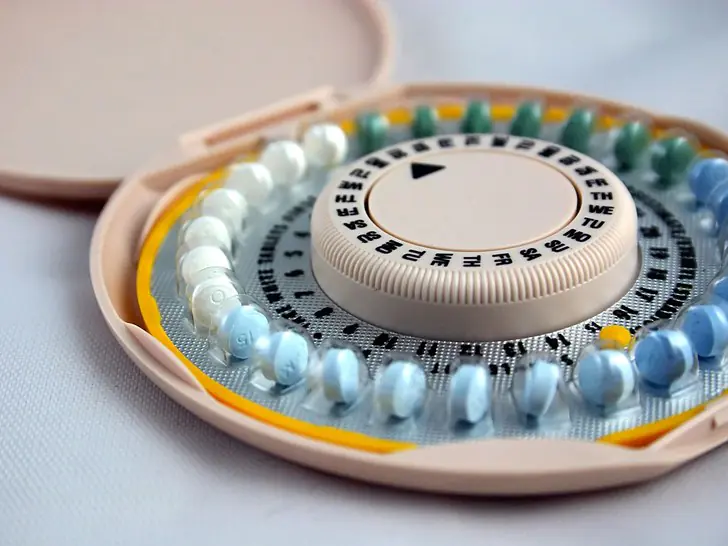
Hormonal pills for women against acne should be taken in the same way as for preventing pregnancy. It is not advisable to skip taking the drug.
Products for external use
If retinoids show low effectiveness, the use of topical drugs cannot be avoided. To eliminate inflammation of the skin, it is recommended to use non-hormonal ointments based on zinc, erythromycin and other antiseptic components. For example:
For severe hormonal rashes, ointments and creams containing corticosteroids are prescribed. Among such products, Dermovate, Elokom, and Lokoid are popular. Unlike previous remedies, hormonal ointments cannot be used for a long time: they are addictive and cause side effects.
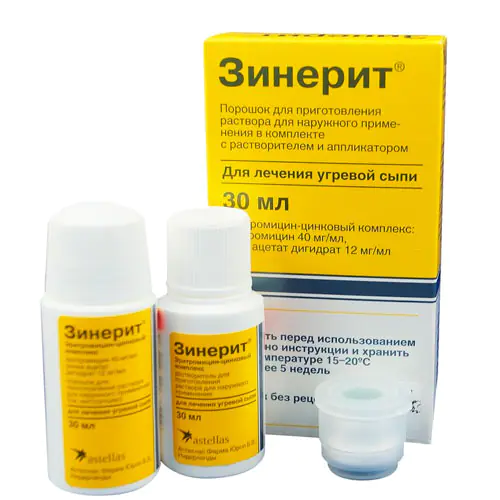
Reviews from women about home treatment
Hormonal acne in women can be treated not only with pharmaceutical drugs. If you study user feedback, instead of ointments and tablets, homemade lotions, masks and baths with medicinal herbs help a lot. To eliminate inflammatory lesions on the skin, the following is often used:
These plants have an antiseptic and decongestant effect and effectively relieve inflammation. At the same time, you need to understand that folk remedies will be effective only if the cause of the hormonal imbalance is eliminated. In addition, you need to take into account that you should not apply hot compresses to your face, since local heating of the skin can lead to the spread of the inflammation zone and deterioration of the condition of the epidermis.
Judging by the reviews, women often treat hormonal acne on their own, without rushing to see a doctor about this problem. Many people try to get rid of rashes using natural remedies. In particular, the following recipes are popular:
- With aloe. Add 2-3 drops of rosemary oil to the pulp obtained from the leaf of this plant. The resulting lotion is used to wipe the skin of the face throughout the day. The product cleanses well, so it can be used before applying medicinal ointments.
- Vegetable face mask. Cucumber, potatoes and pumpkin are grated and the resulting gruel is mixed in equal quantities. Then add 2 tbsp to the vegetable mix. l. sour cream and apply to the skin of the face, evenly distributing it over the surface and not affecting the skin around the eyes. Keep the mask on for 20 minutes, then rinse with warm water.
- Infusion of oak bark. For 1 liter of boiling water you will need 3 tbsp. l. vegetable raw materials. Use the resulting solution to wash or wipe the rash several times a day. Before use, filter the infusion through cheesecloth.
- Wormwood compress. An infusion of wormwood is prepared in the same way as the previous remedy with oak bark. A piece of natural fabric is soaked in the infusion, applied to the face and kept for 30-40 minutes.
Traditional recipes do not help everyone with hormonal acne, but according to reviews, most women notice an improvement after their continued use. Before starting treatment with home remedies, you should make sure that there is no allergic reaction to the components used.
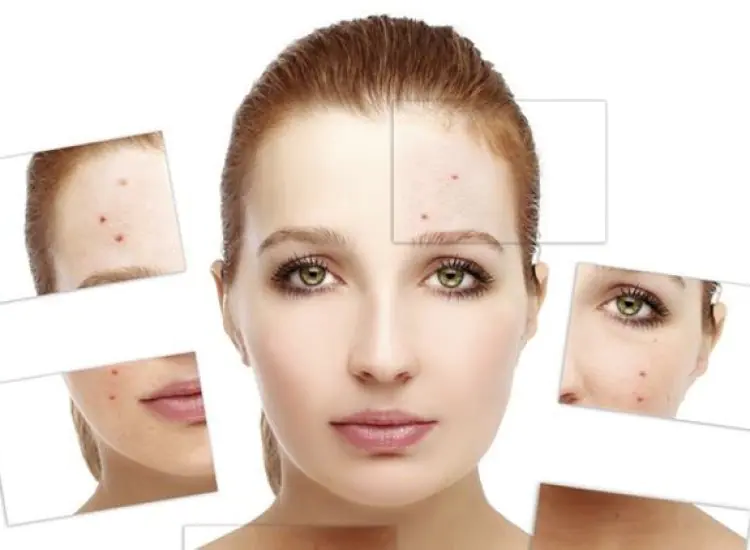
Additional methods to combat acne
There are additional ways to treat skin pustules caused by hormonal imbalance. To get rid of acne on your face, you can use one of the physiotherapeutic techniques. If you have acne, dermatologists recommend taking the following course:
- phototherapy - exposure to light flashes that destroy pathogenic microflora in areas of inflammation;
- ozone therapy – enrichment of soft tissues with oxygen through exposure to nitrogen, which promotes regeneration of the epidermis;
- mesotherapy - involves the introduction of subcutaneous self-absorbing medications that help eliminate scar formation and accelerate the healing process.
If the rash persists for a long time, it will not be possible to avoid acne scars. In severe advanced cases, a cosmetic defect can be eliminated using a laser.
According to research, up to 20% of women aged 25-40 years suffer from acne, and 87% of them have a condition called hyperandrogenism - a high level of production or activity of male sex hormones. Everything that happens on the skin is a consequence of the synthesis of sex steroid hormones, which exert their influence through specific receptors. Hormonal acne in women most often begins to appear due to estrogen deficiency and excessive androgen production. Therefore, both the diagnosis and treatment of acne in women and men differ, as well as the reasons for their appearance.
Why do acne appear due to hormone imbalance?
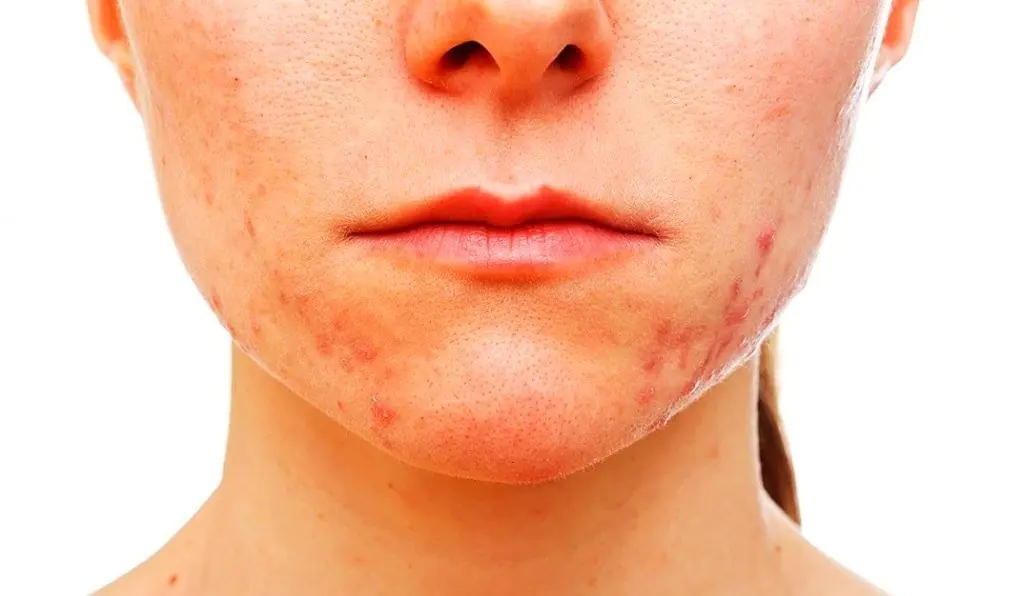
The skin is a target organ for steroids, so acne and hormones are closely related. Androgens can influence the size of the sebaceous glands and lead to disruption of their functioning, more precisely to hypersecretion. An increase in sebum production causes a change in its composition and a significant reduction in the amount of linoleic acid. Because of this process, follicular hyperkeratosis appears, in which skin cells begin to rapidly divide. Dead scales of the epidermis clog the ducts of the sebaceous glands that exit into the hair follicles. In this area, an environment is created that meets all the requirements for the active growth and reproduction of conditionally pathogenic microflora, including acne bacteria. As a result of their vital activity, acne appears.
What hormones cause acne
The ovaries, adrenal cortex, and subcutaneous fatty tissue (to a lesser extent) are responsible for the production of androgens in a woman’s body. Androgens are necessary for full development during puberty, but their excess in adulthood leads to global changes that affect appearance, reproductive health, metabolic processes and menstrual background.
The list of hormones that influence acne is as follows:
- testosterone;
- progesterone;
- dihydrotestosterone;
- prolactin.
Increased testosterone is a background factor contributing to the occurrence of female acne, while progesterone is responsible for how severe hormonal acne will be. Dihydrotestosterone is a more active testosterone that increases the number of receptors in the skin and the sensitivity of the sebaceous glands to them. It also stimulates the secretion of sebum and changes its properties. Prolactin is not a steroid hormone, however, it helps reduce estrogen production, which affects hormonal levels. Acne due to hormones has received various names: “postmenopausal”, “premenstrual”, “endocrine”, “late”, “hyperandrogenic”.
Hormonal acne on the face can appear due to dysfunction of the ovaries or adrenal cortex, and can be acquired or hereditary. The reasons that influence the appearance of acne can be both an increase in the level of androgens, and their normal amount, but capable of turning into more active forms or penetrating into target organs, one of which is the skin.
Polycystic ovary syndrome
Excessive androgen production and hormonal acne are more often a consequence of the disease polycystic ovary syndrome. Healthy ovaries produce two main hormones, estrogen and progesterone, and small amounts of androgens. The latter are necessary during pregnancy for the formation of a male fetus. The syndrome develops for many reasons, in particular during complicated pregnancy, head injuries, and endocrine disorders. In 70% of women, the disease is closely related to the pancreatic hormone insulin, which is responsible for regulating blood sugar levels. When there is too much insulin in the blood, the ovaries begin to actively produce androgens. Male hormones disrupt the functioning of the ovaries, which results in the formation of cysts. One of the external signs of polycystic disease is acne on the face.
How does prolactin affect acne?
Hormonal acne in women can be a consequence of increased levels of the hormone prolactin, which is responsible for the formation of mammary glands and milk production during breastfeeding. In addition, high levels of prolactin suppress the growth of follicle-stimulating hormone, without which estrogen cannot be produced. Prolactin is also a stimulator of androgen production. Insufficient concentration of estrogen and high growth of male hormones directly affect the appearance of acne.
Prolactin increases for the following reasons:
- frequent stress;
- strict diets;
- taking antidepressants and steroid drugs;
- kidney and liver disease;
- pathology of the pituitary gland, etc.
Even a slight imbalance between hormones associated with taking medications, steroids, or the menstrual cycle can cause the occurrence or recurrence of acne.
Signs of hormonal acne
Hormonal acne in women is localized mainly in the face and less often in the upper torso. They are comedones and inflammatory elements (papulopustular rash). Acne in women can be single, which is typical for a mild stage of the disease, or multiple in the form of red bumps and pustules.
The most severe form is conglobate acne in the form of nodules and cysts, after resolution of which deep scars remain.
Acne due to hormonal imbalance is often accompanied by other symptoms of hyperandrogenemia: seborrhea, menstrual irregularities, excess male-pattern hair growth on the face, abdomen, around the nipples and arms.
Diagnostics
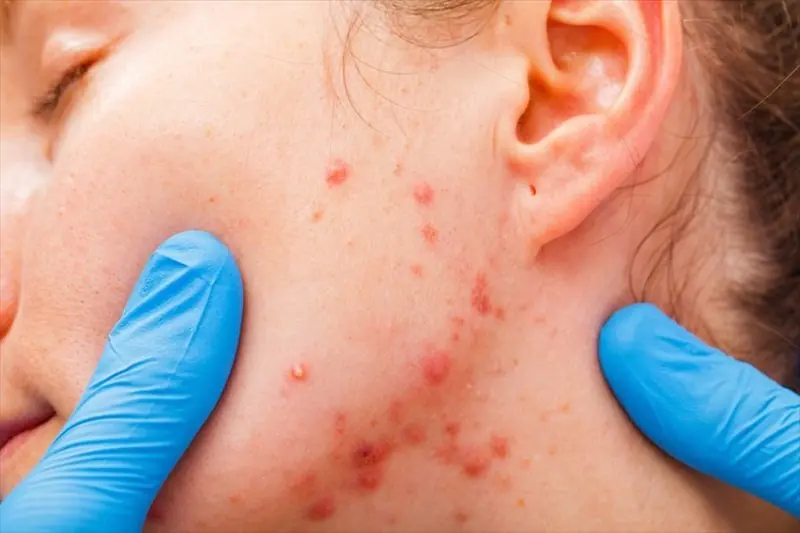
Before treating hormonal acne, a dermatologist, together with a gynecologist, examines the patient in order to identify the causes of the disease:
conducts a survey about the presence of gynecological diseases and the use of oral contraceptives; excludes diseases such as demodicosis, rosacea, perioral dermatitis; prescribes a biochemical blood test to identify the condition of the liver and kidneys; prescribes a laboratory study of the hormonal profile; reveals the nature of hyperandrogenemia (ovarian or adrenal).
It is possible that before treating acne due to hormonal imbalance, an ultrasound of the pelvic organs and an MRI of the adrenal glands will be necessary. In most cases, if hormonal acne is suspected, treatment will require consultation with a gynecologist and endocrinologist and appropriate examinations.
Acne therapy
When hormonal acne is diagnosed in women, treatment requires an individual approach. Both systemic and local medications are prescribed. Compliance with acne-toilet is a must, as this allows you to reduce treatment time, drug dosage and improve skin condition.
The general principle of how to deal with acne is aimed at reducing the level of male hormones, or stimulating estrogen and treating the disease that provoked hormonal imbalance.
Drugs are used that slow down the production of androgens in the adrenal glands and ovaries, block steroid receptors in the dermis, and suppress the process of converting testosterone into the more active form of dihydrotestosterone. For this purpose, combined oral contraceptives are prescribed.
Use of oral contraceptives
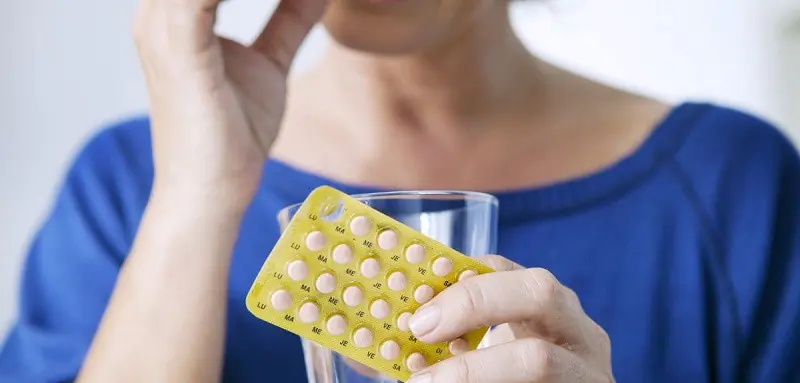
From a large list of drugs that are considered effective for treating hormonal acne in women, contraceptives based on ethinyl estradiol (estrogen), which reduces the level of androgen concentration in the blood, are isolated. As a result of taking medications, the secretion of the sebaceous glands is reduced and thus it is possible to cure hormonal acne.
However, in case of hormonal imbalance, therapy is mainly carried out with drugs based on drospirenone, dienogest, cyproterone acetate, desogestrel, the properties of which are similar to the female hormone progesterone. These are female gestagen hormones, which are produced in the body by the ovaries and slightly by the adrenal glands. They reduce the activity of androgens, prevent testosterone from being converted into active dihydrotestosterone, and reduce the sensitivity of androgen receptors in the skin.
Drospirenone
The 4th generation of combined contraceptives include drugs containing both ethinyl estradiol and drospirenone: Jess, Yarina, Midiana, Dimia. They not only eliminate acne, but also promote weight loss, so they are most suitable for women suffering from acne and prone to excess weight.
Midiana and Yarina are drugs with a low dosage of ethinyl estradiol. They are used according to the established scheme, 1 tablet for 21 days. The next course is after a week's break. The total duration of therapy is 6 months. During the treatment process, not only a significant reduction in acne is noted, but also that the skin becomes smoother, matte, its structure improves and the secretion of the sebaceous glands decreases.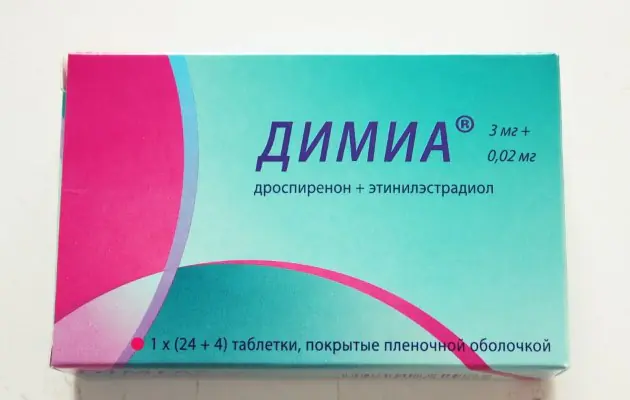
Preparations Jess and Dimia microdosed with ethinyl estradiol are used for 24 days, then a 4-day break.
Cyproterone acetate
Until now, the most effective drug used to combat hormonal acne, especially severe acne, is Diane-35, which combines ethinyl estradiol and cyproterone acetate. Analogues of Diana-35 are contraceptives Chloe and Belluna 35. All drugs belong to the 3rd generation of oral contraceptives. Cyproterone acetate is a substance with the most powerful antiandrogenic effect, but its use is limited and cannot last more than 6 months due to the high risk of side effects. After starting treatment, seborrhea and oily hair are noticeably reduced, and acne can be cured in 3-6 months. The drugs are used 1 tablet per day from the beginning of the menstrual cycle. The effectiveness of treatment can be judged after the first 3 months of use with mandatory monitoring based on test results.
Dienogest and desogestrel
Birth control pills based on dienogest (Janine, Siluet, Qlaira) are officially indicated for the treatment of acne. Siluet and Janine also contain ethinyl estradiol and are taken according to the standard regimen. Qlaira is several types of multi-colored tablets with different hormone contents, so the use of this contraceptive is multiphasic.
Using desogestrel-based contraceptives is another way to get rid of hormonal acne. These are drugs such as Regulon and Novinet. The reception scheme is classic.
Conclusion
Combined contraceptives only lead to a decrease in sebum production, so it is recommended to combine them with external agents based on azelaic acid, benzoyl peroxide, and antibiotics. These are drugs such as Baziron AS, Skinoren, Differin. Don't fight acne on your own. Only by comprehensively influencing all parts of the process of acne vulgaris can acne be treated effectively. Therefore, treatment is carried out by two doctors - a gynecologist and a dermatologist. The gynecologist prescribes drugs to normalize the ratio of hormone levels, the dermatologist prescribes local agents that affect hyperkeratosis and destroy bacteria. Only combination therapy allows for long-term remission and such good results in the treatment of acne that are difficult to achieve using any one method or remedy.
The female body constantly experiences hormonal fluctuations. The background changes during puberty, pregnancy, the menstrual cycle and menopause. Diseases can also affect production.
Hormonal acne in women is a common phenomenon that is difficult to treat.
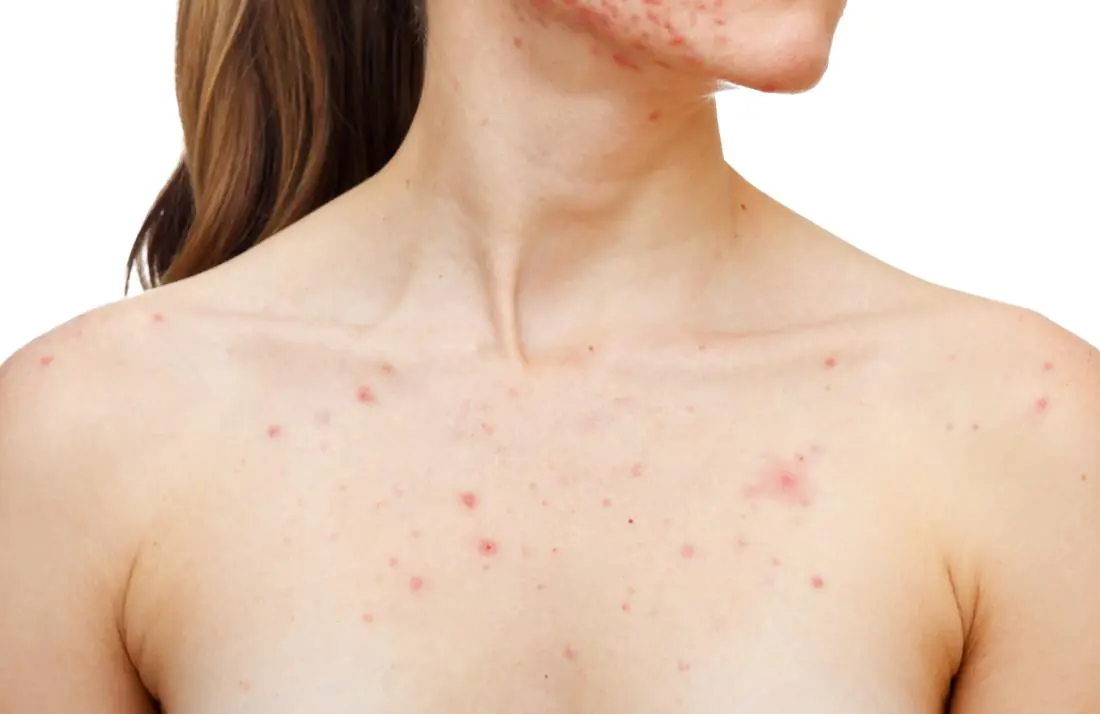
The influence of hormones on skin condition
The appearance of acne is caused by the sebaceous glands. They secrete a certain amount of sebum necessary for the natural protection of the epidermis. With hormonal imbalance, hypersecretion begins (increased secretion), and the composition of fat changes. Skin cells begin to divide at a faster rate.
“Old” scales of the epidermis die and become clogged in the ducts of the sebaceous glands, which exit into the hair follicles. In this environment, numerous bacteria begin to multiply, causing inflammation. The result is noticeable red pimples, which are clearly visible in the photo.
What hormones cause acne?
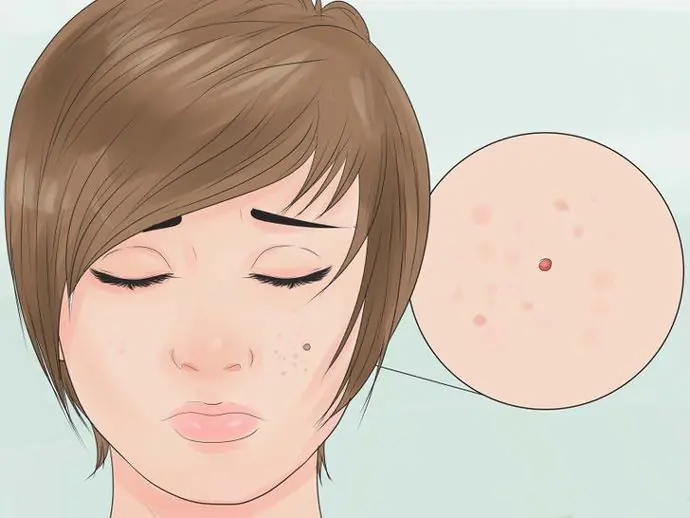
Androgens, steroid male hormones, pose a danger to the skin. In women, they are produced by the ovaries, subcutaneous fatty tissue and the adrenal cortex. During puberty, they are needed for normal physiological development.
In adulthood, an excess of hormones poses a serious danger to the entire body.
Hormonal acne on the face in women can be caused by:
- prolactin;
- testosterone;
- dihydrotestosterone;
- progesterone.
The amount of testosterone is responsible for the amount and “severity” of acne. Dihydrotestosterone increases skin receptors and increases the sensitivity of the sebaceous glands, changes the composition of sebum and stimulates its production.
The process is intensified under the influence of insulin-like growth factor and insulin: they lead to a cascade hormonal reaction and increased sebum production. Female hormones - estrogens - protect the epidermis, and if there are not enough of them, the likelihood of acne formation increases significantly. The thyroid gland is responsible for these hormones.
When do acne appear?
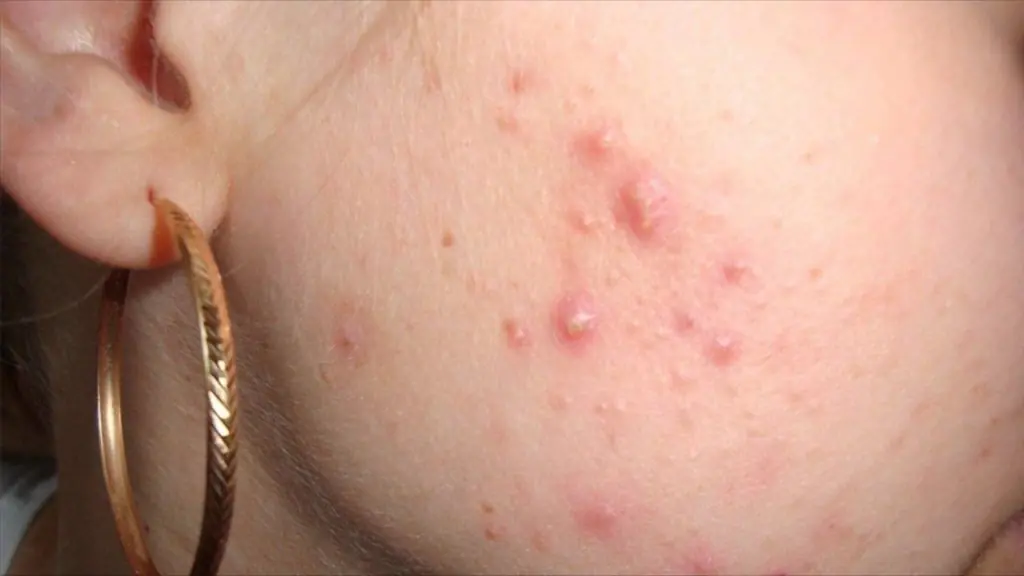
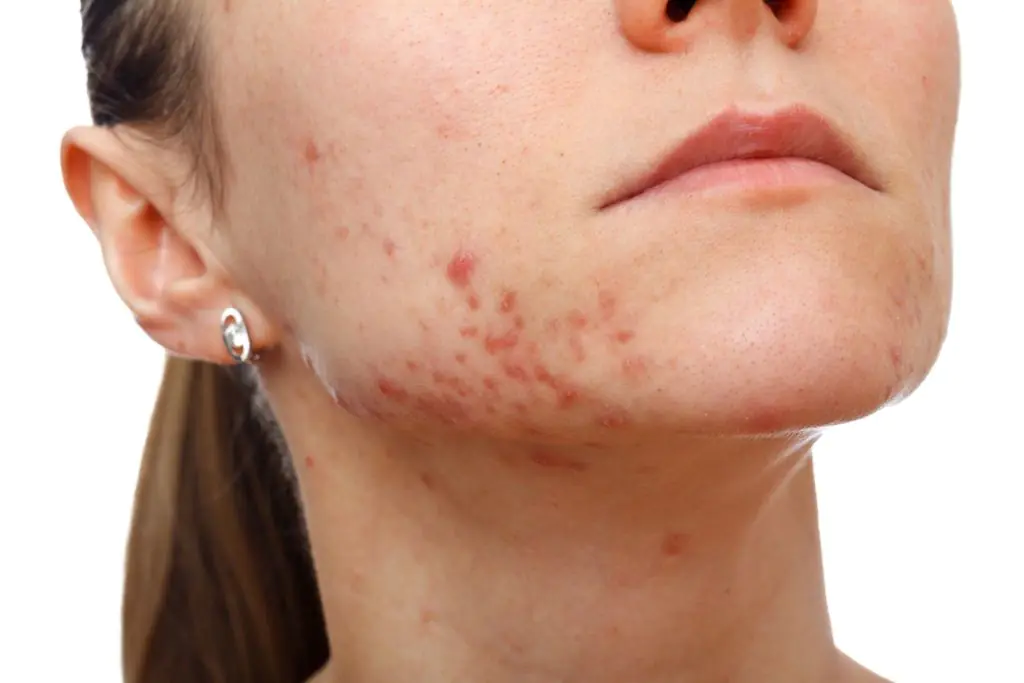
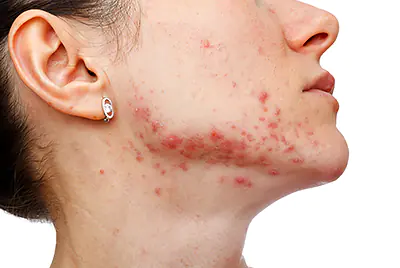


Minor acne can occur even in infants. In children, small sebaceous glands are located close to the surface of the skin. If a nursing mother suffers from hormonal imbalance, the problem passes on to the baby.
Numerous pimples affect the cheeks, nose, back of the head and forehead. Gradually, the body adapts to environmental conditions and the pathology goes away on its own, without the intervention of doctors.
Teenagers experience a kind of hormonal “swing”. The gonads are at the stage of formation and the normal ratio of hormones is achieved gradually. The result is numerous large acne. In this case, you can do without medications and fairly high-quality skin care.
Hormonal acne on the chin, cheeks and body often occurs during the premenstrual period. At the beginning of the cycle, estrogen is the predominant hormone, but during ovulation its levels begin to fall. Testosterone is stable. Against this background, natural protection is reduced, and acne begins.
After childbirth, the level of estrogen in the female body is unstable, and the amount of progesterone increases rapidly. Sebum production increases significantly. Acne affects the lower part of the face and can persist for a long time.
Hormonal imbalance can also be triggered by stress, contraception or irregular sex life.
During menopause, decline occurs and ovarian activity decreases significantly. Estrogen synthesis weakens, and there is no longer enough of it for the normal functioning of the body’s systems.
At the same time, the adrenal glands work almost as before, continuing to secrete androgens. Without auxiliary hormone therapy, acne becomes a companion to menopause.
Diagnostics for selection of therapy

In adolescence, acne due to hormonal imbalance can be overcome with quality care, but adult women need more serious treatment. To identify the exact causes of acne, you need to undergo a series of tests.
The list includes:
- blood for hormone levels;
- Ultrasound of the reproductive system;
- Analysis of urine.
Additionally, a CT scan of the head may be required.
A blood test can reveal the levels of pituitary, thyroid and androgen hormones. It is recommended to take this test within 5-7 days after the end of menstruation.
Urine shows how much androgens are excreted per day, and donation should be performed in the second phase of the cycle. It is advisable to do an ultrasound between the fifth and tenth day after menstruation.
Treatment with medications
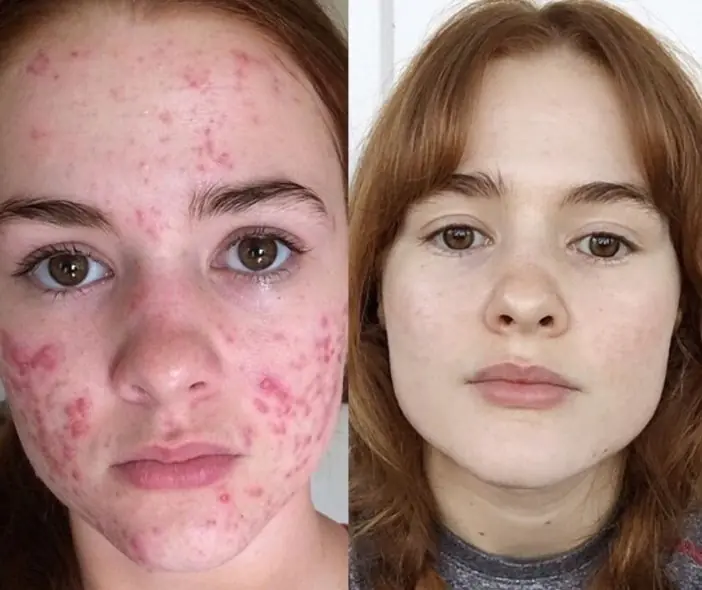
After carrying out the necessary diagnostics, the specialist decides how to treat acne. To overcome the problem, it is necessary to eliminate the cause of the disruption of the sebaceous glands.
For this the following can be used:
Metformin reduces insulin resistance, and spironolactone is a kind of antiandrogen. It is necessary to normalize testosterone production.
Antiandrogens allow you to get rid of acne within three months of treatment.
If it is necessary to restore the balance of progesterone and estrogen, hormonal oral contraceptives are prescribed. They are selected individually after testing.
The disadvantage is the duration of the effect: there will be no acne while the woman is taking the drugs. After canceling them, the problem comes back again.
Diet

You can get rid of hormonal acne with diet only if the pathology is caused by insulin. For other disorders, changing the diet helps to generally cleanse the body and normalize the condition of the skin as a whole.
You will have to get rid of:
- Sahara;
- muffins;
- animal fats;
- carbonated drinks;
- sweets.
The danger comes from fast carbohydrates, which are easily absorbed by the body. They are replaced with foods with a low glycemic index. Preference is given to vegetable fats, the amount of proteins remains at the same level.
ethnoscience

Treatment with folk remedies is possible with the approval of a doctor. More often they are an auxiliary method. So, to balance testosterone and improve skin condition, it is recommended to regularly consume fish oil. You should drink in courses, leaving an interval of 1-2 months.
Conclusion
If there is a high level of estrogen, and progesterone after ovulation is too low, the tree of Abraham helps. It affects the hypothalamus and pituitary gland. However, the plant is not hormonal. The course of application is no more than three months, after which a pause is made.
Hormonal acne can be a serious problem, but it is possible to get rid of it. To do this, you need to consult a doctor and follow the recommendations.



